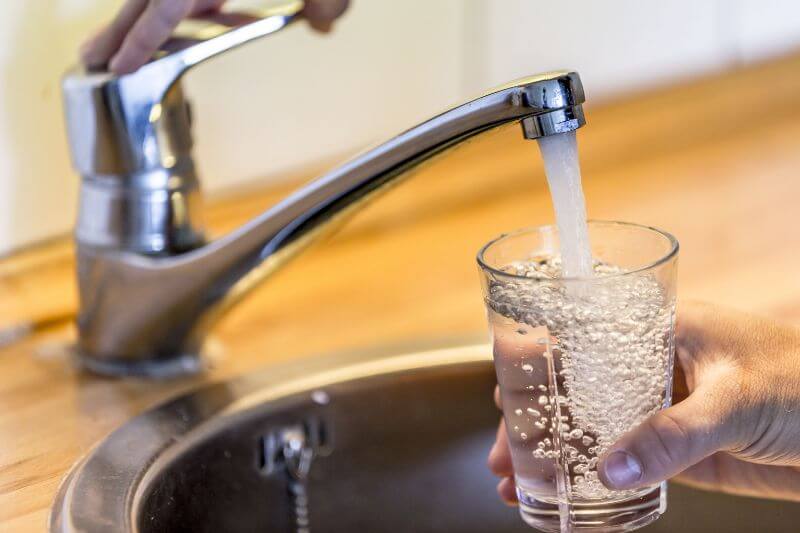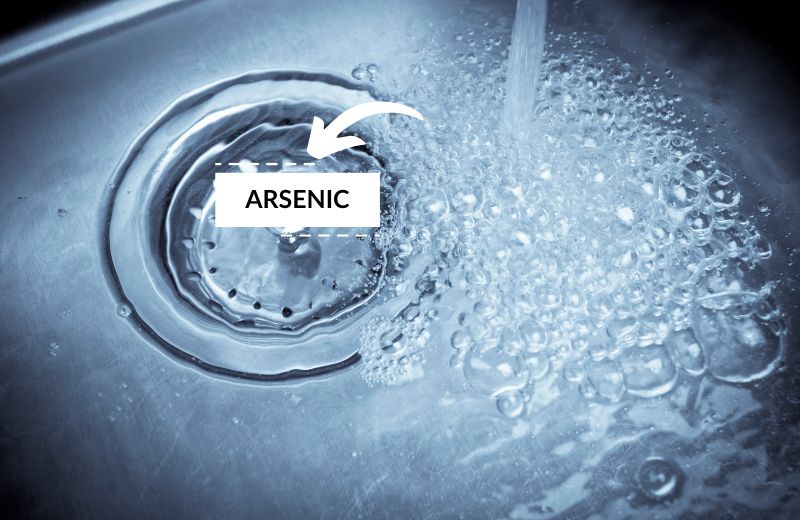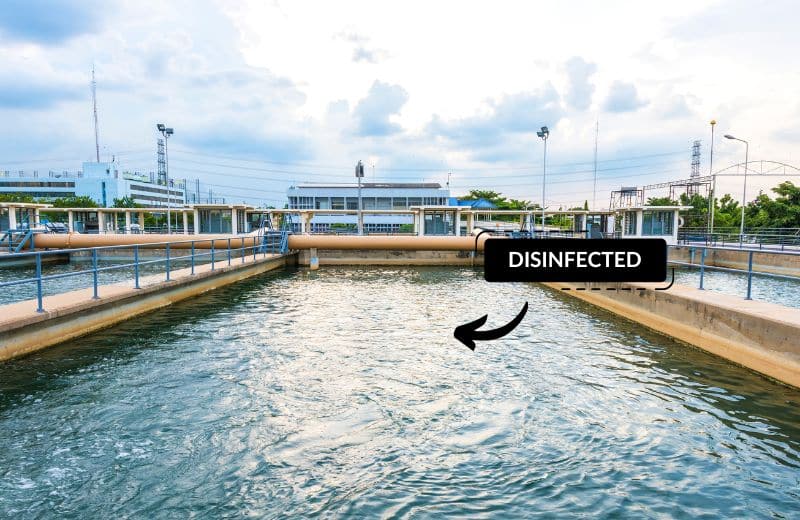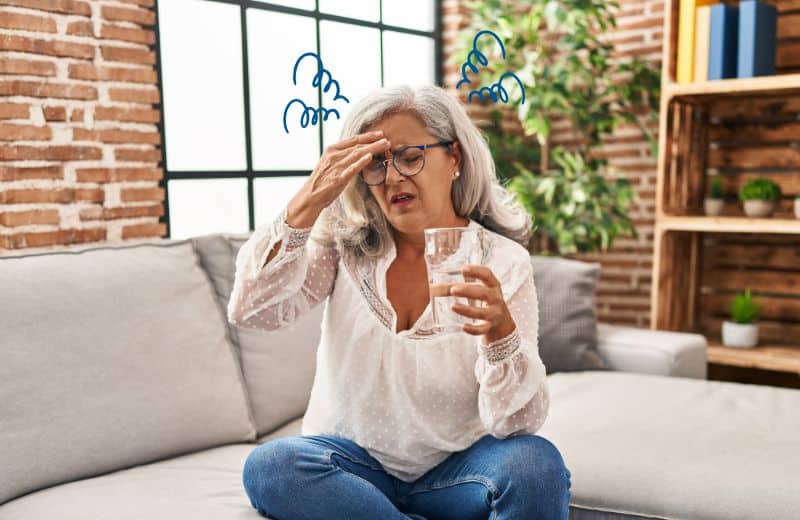Is it safe to drink the tap water in Little Rock? Which impurities are present in the water, and does the city’s drinking water supply contain any contaminants in concentrations exceeding the EPA’s Maximum Contaminant Levels (MCLs)? Does Little Rock have poor water quality?
We’ve shared all the answers to these questions and more in this Little Rock tap water quality and safety guide.
📌 Key Takeaways:
- The drinking water in Little Rock, Arkansas is considered generally safe to drink.
- There are a number of trace contaminants in Little Rock’s community water, but they don’t violate guidelines set by the Environmental Protection Agency (EPA).
- The 4 biggest problem contaminants in Little Rock tap water are arsenic, disinfection byproducts, radium, and uranium.
Table of Contents
- 🚰 Can You Drink Little Rock Tap Water?
- 🗺️ Where Does the Tap Water in Little Rock Come From?
- 📉 Who Regulates Little Rock Drinking Water?
- 🧪 Little Rock Annual Water Quality Report
- ☣️ Contaminants Found Above Guidelines in Tap Water in Little Rock
- 🧫 Main Contaminants Found in Little Rock Tap Water
- ⛲ Little Rock Drinking Water in Public Places
- 💬 Frequently Asked Questions
🚰 Can You Drink Little Rock Tap Water?
Yes, you can drink the City of Little Rock tap water the water is treated to make it potable and safe according to the EPA legal drinking water guidelines. Little Rock (like the majority of other public water systems in the US) must legally reduce certain contaminants with known health concerns down to trace levels that shouldn’t pose a health risk.
So, Little Rock’s drinking water complies with legal requirements and contains only trace amounts of harmful impurities. However, just because Little Rock doesn’t have contaminated water, it doesn’t mean that the water is completely healthy or pure.
Many folks believe that the EPA’s Maximum Contaminant Levels (MCLs) aren’t strict enough and allow dangerously high levels of contaminants to exist in our drinking water. The Environmental Working Group (EWG) is an organization that voices this opinion – and, based on its own research, the EWG has produced its own more stringent set of Health Guidelines for the EPA-regulated (and some not currently regulated at all) contaminants.
The EWG has shared a Tap Water Database for the City of Little Rock, which highlights all the contaminants detected in the City’s drinking water supply, including those that exceed EWG Health Guidelines. According to the database, 11 contaminants – many of which are disinfection byproducts – exceed these Guidelines.
So, Little Rock water is legally safe to drink according to the EPA, but the EWG thinks otherwise.
Has Little Rock had any violations regarding its drinking water supply in the past? Yes – in the past 10 years, the City had 1 violation for Monitoring and Reporting, specifically for the disinfection byproduct, chlorite. However, this violation was non-health-related, and according to the most recent EPA ECHO database, Little Rock didn’t violate any area of the Safe Drinking Water Act from April 2019 to June 2022.
One drinking water contaminant with massive safety concerns is lead. This toxic heavy metal most commonly gets into water supplies through old lead pipes, meaning that it may contaminate water after it has been treated.

From what we can find online, it looks like all lead pipes have been replaced by Central Arkansas Water after the utility found around 140 pipes (and estimated it would need to replace a further 250 pipes) containing lead in 2017. However, the safety of your drinking water in Little Rock may be compromised if your home was built before 1970.
Little Rock SDWA Violations Within 10 Years
👉 Looking for further reading? Check out our guide on the states with the worst water quality.
| Period of Compliance | Resolved? | Health-Based? | Category Code | Code | Rule Code | Contaminant Code | Rule Group Code | Rule Family Code |
|---|---|---|---|---|---|---|---|---|
| 04/01/2014- 04/30/2014 | Yes | No | Monitoring and Reporting (MR | Monitoring and Reporting (DBP) (27) | Stage 1 Disinfectants and Disinfection Byproducts Rule (210) | Chlorite (1009) | Disinfectants and Disinfection Byproducts Rule (200) | Stage 1 Disinfectants and Disinfection Byproducts Rule (210) |
Data Source: EPA ECHO database
🗺️ Where Does the Tap Water in Little Rock Come From?
There are two main sources of drinking water for Little Rock:
- Lake Maumelle (in west Pulaski County)
- Lake Winona (in Saline County)
Both of these water sources are surface water (meaning they’re on the ground, not below ground) and both are used to supply the Jackson Reservoir in Little Rock.
The Arkansas Department of Health completed an assessment of the vulnerability of Little Rock’s source water and determined that the water has a medium-high susceptibility to contamination. This is likely due to the fact that surface water is more likely to become contaminated than groundwater because it’s exposed to pollutants in the air and water runoff.
However, Central Arkansas Water owns and manages Lake Maumelle, which supplies around 65% of the City’s water, and has established land protection projects to reduce the likelihood of pollution in the area.
Water is then delivered to one of two treatment facilities, also located in Little Rock:
- Jack H. Wilson Water Treatment Plant
- Ozark Point Water Treatment Plant
How is Little Rock water treated? The water treatment process involves physical filtration, coagulation, sedimentation, and disinfection, which removes particles of varying sizes and kills harmful bacteria and other germs, making it microbiologically safe.
This treated water is then stored and supplied around the City to homes and businesses.

📉 Who Regulates Little Rock Drinking Water?
The City of Little Rock drinking water is regulated by the Environmental Protection Agency (EPA) and the Arkansas Department of Health and managed by Central Arkansas Water.
The EPA has established protective drinking water standards for tens of common contaminants under the Safe Drinking Water Act (SDWA), which was established to protect US drinking water quality.
The EPA has produced Maximum Contaminant Levels (MCLs) for the contaminants that (based on research and studies) are considered to have health effects when ingested in drinking water. MCLs are the maximum amount of a contaminant that a water utility should allow in its treated water supply. Some contaminants also have Maximum Contaminant Level Goals (MCLGs), which are the maximum amount of a contaminant in water before it has known health effects.
The EPA regulates public water systems like Central Arkansas Water by requesting regular monitoring and testing to ensure compliance with its MCLs.
A number of emerging contaminants, like PFAS and pharmaceuticals, aren’t currently monitored by the EPA, but many public water systems reduce or remove these contaminants according to local or state guidelines.
🧪 Little Rock Annual Water Quality Report
Little Rock produces a Water Quality Report (or Consumer Confidence Report), which highlights information about the City’s water quality, and makes an updated version of this Report available to the public every year.
The latest Report shares data on test results from January to December 2021, and includes the following information:
- The drinking water source
- The safety of this water source
- Test results for water quality
- Contaminants found in the water (in both the City’s water treatment centers) and how they compare to EPA Action Levels or MCLs
The good news is that, according to this Report, there are only a handful of contaminants present in Little Rock’s drinking water, and none of these contaminants are present in concentrations that exceed EPA guidelines or violate the Safe Drinking Water Act.
However, you might be concerned about drinking even trace amounts of certain contaminants detected in the City’s water supply, even if concentrations are below the EPA’s MCLs. For example, an average of 32 PPB (parts per billion) of HAA5 was detected in Little Rock water – just over half the EPA’s MCL of 60 PPB, but you’d probably rather drink water containing 0 PPB of this cancer-causing disinfection byproduct.
The contaminants listed in the 2021 Report include:
- Fluoride
- Nitrate
- Lead
- Copper
- Chlorine
- HAA5
- TTHM
- Chlorite
Only the contaminants found in concentrations higher than 0 PPB in the City’s water are shared, so presumably, no other contaminants were detected even in trace levels.
Make sure you read the most up-to-date Water Quality Report and keep in mind that the information in the report is only accurate on the release date. The EPA regularly reviews and reevaluates its regulations, and certain unregulated contaminants may eventually become regulated.
We suggest noting down the contaminants that you want to research or learn more about. Once you know what your water contains, you can decide whether you’re happy to drink water straight from your tap or you’d prefer to filter your water first.
| Term | Description |
|---|---|
| Period of Compliance | Time period which a violation took place and resolved. |
| Status | Indication of the most recent compliance status of the violation. Resolved: The system has returned to compliance from the violation Archived: The violation is not yet resolved, but is more than 5 years past its compliance end date. Addressed: The violation is not resolved nor archived, but addressed through formal enforcement. Unaddressed: The violation has not been addressed, resolved, nor archived |
| Health Based | Whether the violation affects health standards. |
| Category Code | Category of violation by which it is reported. TT: Treatment Technique Violation MRDL: Maximum Residual Disinfectant Level Other: Other Violation MCL: Maximum Contaminant Level Violation MR: Monitoring and Reporting MON: Monitoring Violation RPT : Reporting Violation |
| Code | A complete description of violation codes. |
| Contaminant Code | Represents a contaminant for which the municipal water system has incurred a violation against a primary drinking water regulation. |
| Rule Code | The National Drinking Water rule. 110: Total Coliform Rule 121: Surface Water Treatment Rule 122: Long Term 1 Enhanced Surface Water Treatment Rule 123: Long Term 2 Enhanced Surface Water Treatment Rule 130: Filter Backwash Rule 140: Ground Water Rule 210: Stage 1 Disinfectants and Disinfection Byproducts Rule 220: Stage 2 Disinfectants and Disinfection Byproducts Rule 230: Total Trihalomethanes 310: Volatile Organic Chemicals 331: Nitrates 332: Arsenic 333: Inorganic Chemicals 320: Synthetic Organic Chemicals 340: Radionuclides 350: Lead and Copper Rule 410: Public Notice Rule 420: Consumer Confidence Rule 430: Miscellaneous 500: Not Regulated 111: Revised Total Coliform Rule |
| Rule Group Code | Uniquely defines a rule group. 120: Surface Water Treatment Rules 130: Filter Backwash Rule 140: Groundwater Rule 210: Stage 1 Disinfectants and Disinfection Byproducts Rule 220: Stage 2 Disinfectants and Disinfection Byproducts Rule 230: Total Trihalomethanes 310: Volatile Organic Chemicals 320: Synthetic Organic Chemicals 330: Inorganic Chemicals 340: Radionuclides 350: Lead and Copper Rule 400: Other 500: Not Regulated 110: Total Coliform Rules 410: Public Notice Rule 420: Consumer Confidence Rule 430: Miscellaneous |
| Rule Family Code | Defines the rule family code. 100: Microbials 200: Disinfectants and Disinfection Byproducts Rule 300: Chemicals 400: Other 500: Not Regulated |
☣️ Contaminants Found Above Guidelines in Tap Water in Little Rock
It’s good to know that none of the contaminants in Little Rock’s water exceed EPA guidelines, which means that the water is legally safe to drink.
However, we think it’s still worth mentioning the contaminants that exceed the separate Health Guidelines produced by the Environmental Working Group (EWG).
These guidelines essentially mean nothing because they’re not legally enforceable. However, if you agree with the EWG that the EPA’s own guidelines aren’t strict enough, you might want to know which contaminants are found above EWG Health Guidelines:
Arsenic
Arsenic, a major chemical contaminant, may cause vomiting, diarrhea, tingling and numbness of the extremities, and even death if consumed in high levels in drinking water. 1.90 PPB (parts per billion) of arsenic was detected in Little Rock water – that’s 475x the EWG’s recommended Health Guideline of 0.004, but still much lower than the EPA’s MCL of 10 PPB.

Haloacetic acids (HAA5)†
One common type of disinfection byproduct produced by chlorine disinfection is HAA5, which increases the likelihood of certain cancers, especially liver and bladder cancer. HAA5 is found in quantities of 26.9 PPB in Little Rock drinking water, which exceeds the EWG’s recommended Health Guideline of 0.1 PPB by 269x – but the EPA’s legal limit for this drinking water contaminant is 60 PPB.
Radium (-226 & -228)
Radium -226 & -228 are two radiological contaminants that may cause cancer, immune system effects, and anemia if large amounts are consumed over a long period. 1.80 pCi/L (picoCurie per liter) of radium was detected in Little Rock drinking water, which is 36x the EWG’s Health Guideline of 0.05 pCi/L. The EPA’s legal limit for radium combined is 5 pCi/L.
Total trihalomethanes (TTHMs)†
Another common disinfection product in municipal drinking water is total trihalomethanes (TTHMs). These disinfection byproducts increase the risk of bladder and colon cancers and may cause birth defects and reproductive problems when consumed in excess. 28.7 PPB of TTHMs were detected in Little Rock drinking water – 191x the EWG’s recommended Health Guideline of 0.15 PPB. This is still well within the EPA enforcement for this drinking water contaminant, which is 80 PPB.
Related: How to remove trihalomethanes from drinking water
Other Disinfection Byproducts
Other disinfection byproducts were detected in Little Rock drinking water, including bromodichloromethane, chloroform, dibromoacetic acid, dibromochloromethane, dichloroacetic acid, and trichloroacetic acid. These disinfection byproducts increase the risk of various cancers and could affect nervous system activity and cause liver damage. Between 1.05 PPB and 14.9 PPB of other disinfection byproducts were detected in that City’s water – between 26x and 143x the EWG’s recommended Health Guideline of 0.04 to 0.4 PPB. There is currently no legal limit for any of these disinfection byproducts in drinking water.

Uranium
Uranium, a highly-toxic heavy metal, dissolves into water in minerals from rocks and soils. Uranium is eliminated quickly from the body, but long-term exposure to elevated levels of this contaminant may cause kidney damage. 3.42 pCi/L of uranium was detected in Little Rock drinking water – that’s 7.9x the EWG Health Guideline of 0.43 pCi/L but within the legal limit of 20 pCi/L.
Like most public water systems in the country, the Little Rock water utility has the most EWG violations for disinfection byproducts. This type of drinking water contaminant is common in municipal drinking water because most utilities use some form of chemical disinfectant (chlorine or chlorine dioxide, usually) to sterilize their water, which interacts with organic matter in the water to produce byproducts.
Chlorine as a disinfectant is cheap, widely available, and easy to use, making it common for large-scale water treatment. However, the health effects of disinfection byproducts on the human body – including the increased risk of various cancers – are very real.
🧫 Main Contaminants Found in Little Rock Tap Water
So, you know which contaminants are potentially unsafe in Little Rock’s drinking water systems – but what about the contaminants present in acceptable (according to both the EWG and EPA) levels?
Here are the main contaminants found in Little Rock drinking water:
- 1,2,4-Trimethylbenzene – One of numerous volatile organic chemicals that may occur in the environment due to releases into water, land, or the air; may cause respiratory irritation, anxiety, confusion, and poor muscle control if large amounts are ingested.
- Barium – A naturally occurring metal that enters water from rocks and soils; consuming high levels in drinking water may cause abdominal cramps, nausea, diarrhea, vomiting, high or low blood pressure, and muscle weakness.
- Chromium-6 (hexavalent chromium) – A carcinogenic chemical that leaches into water from hazardous waste sites and industrial pollution; may cause damage to the liver and reproductive systems, delayed skeletal development, and cancer if large amounts are consumed.
- Disinfection byproducts including bromoform and monochloroacetic acid – Produced as a result of chlorine reacting with organic matter in water; may increase the risk of certain cancers and liver damage in large quantities.
- Manganese – A water hardness mineral that’s often present alongside calcium; causes hard water damage like limescale and soap scum but doesn’t have any health concerns in naturally-present amounts in water.
- Molybdenum – An essential trace element found in low levels in soils and sediments; not harmful to health in normal concentrations but may occur in dangerous levels in areas near molybdenum mining operations.
- Nitrate – A form of nitrogen that gets into water from fertilizer runoff, urban drainage, and discharge from septic systems; may affect the blood’s ability to carry oxygen and increase the risk of certain cancers if ingested in large amounts.
- Total chromium – Refers to both forms of chromium in water: the largely harmless trivalent chromium (chromium-3), and the much more dangerous hexavalent chromium (chromium-6).
- Strontium – A heavy metal that gets into water from strontium-containing rocks or is released by human activities like mining and manufacturing operations; may cause cancer in excess but doesn’t affect health at low levels.
- Xylenes – Chemical solvents that pollute water due to industrial discharge; may harm developing fetuses and cause nervous system damage in large quantities.

⛲ Little Rock Drinking Water in Public Places
It’s safe to drink the tap water in public places in Little Rock – it’s usually exactly the same water that gets supplied to homes in the City.
Restaurants in the US have no legal obligation to provide free tap water on request, but generally, most Little Rock restaurants will give you a glass or jug of water from the tap if you ask. Restaurants that have a liquor license have more of an obligation to, and are more likely to, provide free tap water on request.
The hotels in Little Rock should also offer free tap water in their guest rooms. However, some folks prefer not to drink the water in hotels because they’re concerned about the dangers of drinking bathroom tap water (lead and other dangerous metals are sometimes used in bathroom plumbing). You could ask at the bar for tap water if you prefer not to drink the water in your room.
There’s no requirement to drink public water in Little Rock at all – you could just buy bottled water from the store. However, it’s best not to make a habit of this since single-use bottled water is wasteful and not good for the environment.
💬 Frequently Asked Questions
Does Little Rock have hard water?
No, Little Rock doesn’t have hard water. In fact, Little Rock – along with most other Cities in Arkansas – apparently has one of the lowest averages for hard water in the country, with an average water hardness reading of 26 PPM. That means you shouldn’t experience noticeable hard water effects like limescale and mineral deposits, poor lathering with soap, and soap scum on your skin and hair.
Does Little Rock fluoridate its water?
Yes, Little Rock fluoridates its water, and has done for just over 70 years. However, around 15 years ago, there were contestations about water fluoridation in Arkansas, and a Board of Director meeting was held in 2006 regarding the amount of fluoridation in Little Rock’s water. Fluoride has numerous dental health benefits, but may also have negative health effects like dental and skeletal fluorosis.
How is Little Rock water disinfected?
Little Rock water is disinfected with chlorine. Chlorine is the most popular water disinfectant because it’s cheap and easy to use for large-scale water treatment. However, this chemical reacts with organic matter in water and produces disinfection byproducts, which increase the risk of cancer and have other harmful health effects. You can remove most disinfection byproducts with an at home water filter.
Where does Little Rock water come from?
The tap water in Little Rock comes from two surface water sources: Lake Winona and Lake Maumelle. Lake Maumelle (in Pulaski County) provides about 65% of the City’s water, while Lake Winoa (in the foothills of the Ouachita Mountains in Saline County) provides the other 35%. Both lakes are highly protected but are still more prone to pollution than groundwater (underground water) supplies.
Can I drink tap water in Arkansas?
Yes, you can drink tap water in Arkansas if the faucet is connected to the community water system. Tap water in Arkansas is tested and treated to make it safe to drink according to regulations set by the EPA. However, Arkansas water still contains traces of contaminants, and you may want to use a filtration method to make your water cleaner, safer, and tastier.
